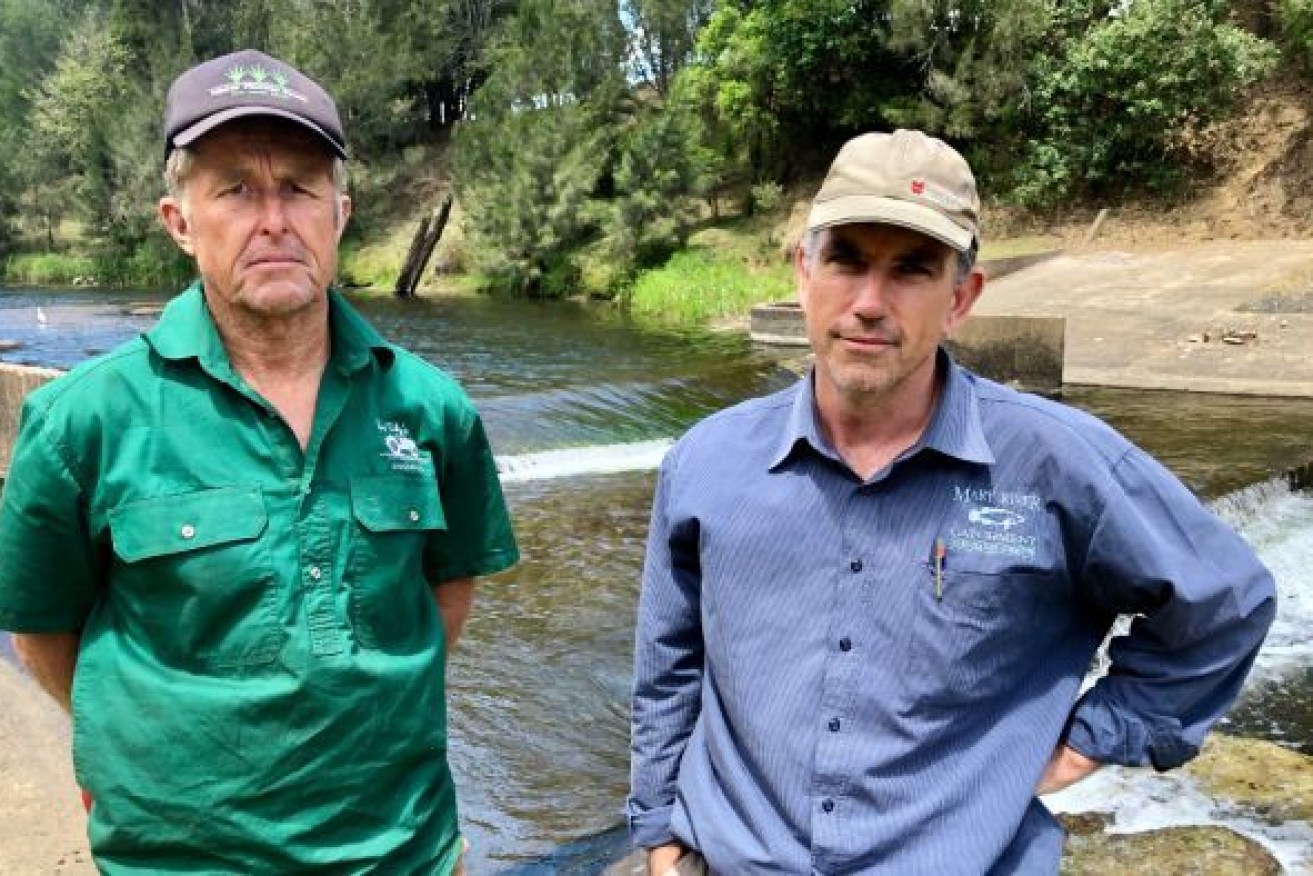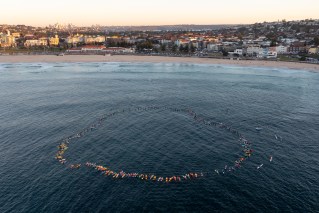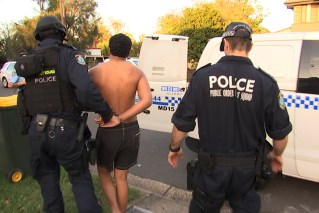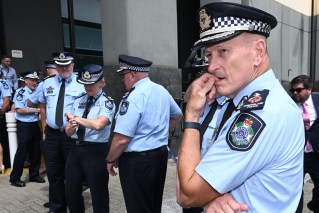River runs dry: Alarm bells ringing as mighty Mary slows to a trickle
A local river management group says “alarm bells” should be ringing as Queensland’s Mary River slows to a trickle, putting the environment and hundreds of irrigated farms at risk.

Organic farmer John Tidy and Brad Wedlock from the Mary River Catchment Coordinating Committee are concerned about the lack of flow in the Mary River and its tributaries. (Photo: ABC)
A local river management group says alarm bells should be ringing as Queensland’s mighty Mary River slows to a trickle, putting the environment and hundreds of irrigated farms at risk.
Project officer for the Mary River Catchment Coordinating Committee (MRCCC) Brad Wedlock says the river has “basically stopped flowing”.
“When we look at all the gauging stations on the Mary River today they’re all at about zero megalitres per day flow,” he said.
“That’s unprecedented to have zero flows in the Mary River in October.
“Locals [and] old-timers; they don’t recall a time when in October we’ve had this level of low flow.”
Records were set for the wrong reasons last year when the river stopped running for nine weeks, which forced dairy farmers to cull cows and caused fish kills in oxygen-starved pools.
Hopes are pinned on a La Niña weather pattern and forecasts of spring and summer rain.
But within days the Gympie Regional Council could be forced to start the expensive process of carting town water to Amamoor, where the historic Mary Valley rattler stops.
Water worries
The flow is too low at the intake for Amamoor Creek’s treatment plant and Level 5 water restrictions have been introduced to limit use to 120 litres for each person each day.
“It’s dire, dire circumstances there in terms of supply,” Mayor Glen Hartwig said.
“But Borumba Dam is at 87 per cent, so there’s plenty of water supply for Imbil and Gympie and we will utilize our treatment facilities at Imbil or Gympie to make sure that Amamoor and Kandanga do not go without water.
“People will still be able to flush their toilets, wash their dishes just like they normally would.”
Releases from Borumba Dam, 36 kilometres away, are the only thing keeping up fresh supplies of water to Gympie’s urban intake on the river.
Endangered species impact
The 9595sq km catchment provides habitat for threatened aquatic species including the critically endangered white-throated snapping turtle, the endangered Mary River cod, Mary River turtle, giant barred frog, and the Australian lungfish, which is classified as vulnerable to extinction.
Wedlock says the lack of water will cause problems for the annual spawning of Mary River cod, which is underway.
“The pools that they would move into, they can’t actually move into them because they’re not connected anymore,” he said.
“And then you’ve got the irrigators who are putting restrictions on themselves, but the water is just not going to be there soon.
“So we’ll end up in the situation where there’ll be no water for the river and there’ll be no water for irrigators.”
A spokesperson for the Department of Natural Resources, Mines and Energy said that there were 893 water entitlements in the Mary River catchment, excluding the supplemented water allocations in the Mary Valley and Lower Mary River water supply schemes.
But he could not specify how much water was assigned for irrigation as some farms were allocated water on volume and others, historically, on hectares.
The MRCCC has urged the department to actively encourage the reformation of about 20 voluntary water advisory groups to better discuss water access and how to improve on farm efficiencies.
“In the 1970s, 1980s, 1990s we had strong water advisory groups, where all the irrigators from a sub-catchment would come together,” Mr Wedlock said.
“They would argue amongst themselves, but they would collectively decide upon how much water each of them could use
“If you’ve got groups of people together, you can bring [education] programs to them.
“Those groups had support back then to modernise and become more efficient.”
‘This is our lifeblood’
Organic avocado and small crops grower John Tidy chairs the Amamoor Creek water advisory group, one of just a handful of groups left in the catchment.
“What I would like to do is get the whole community together,” he said.
“Even if we do get rain in another month, this is going to happen again and this is our lifeblood, it’s like an artery to your heart.
Tidy agreed that education was critical and cited one farmer in the group who reduced water usage by 30 per cent by installing soil moisture meters.
“As farmers, we can never learn too much, we need to help each other and to see how we can reduce their water use by mulching, by watering at night when there’s not so much evaporation,” he said.
“I’m very worried. Last December we were in a bad way but I never thought that it would get worse than that and it is worse this year.”
– ABC / Jennifer Nichols












